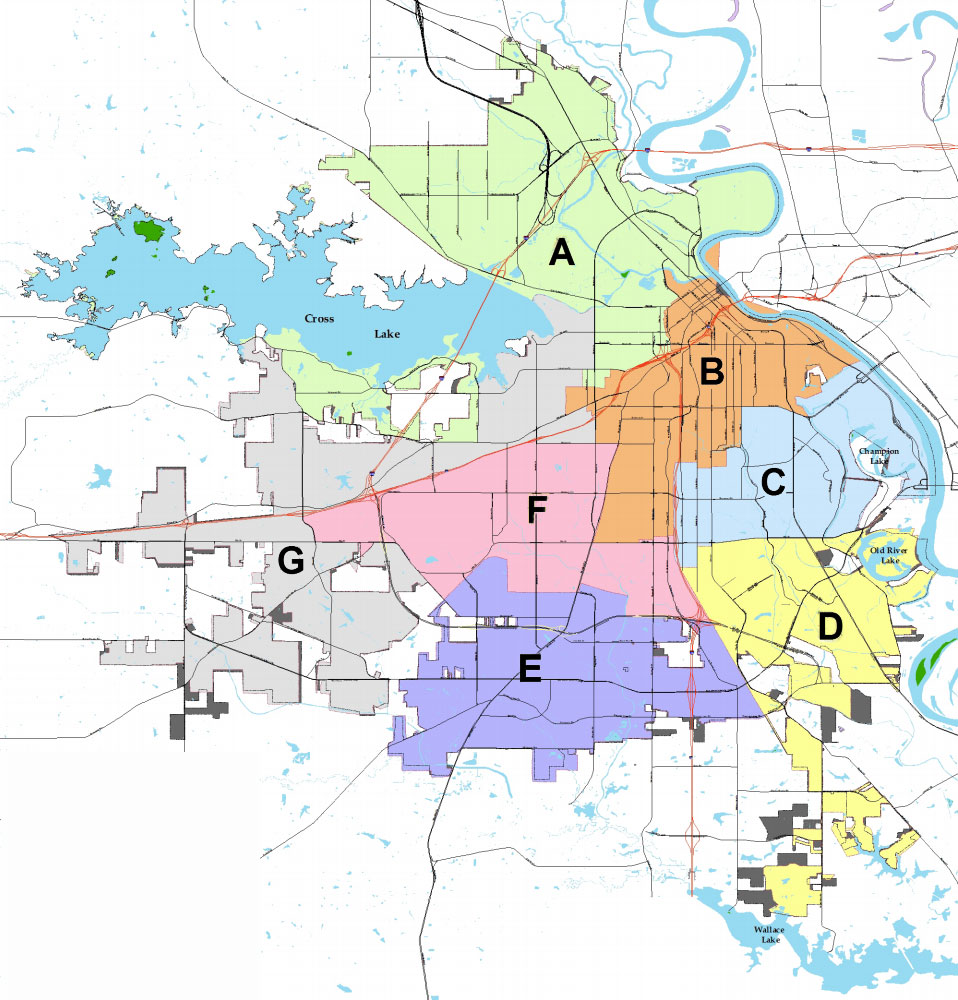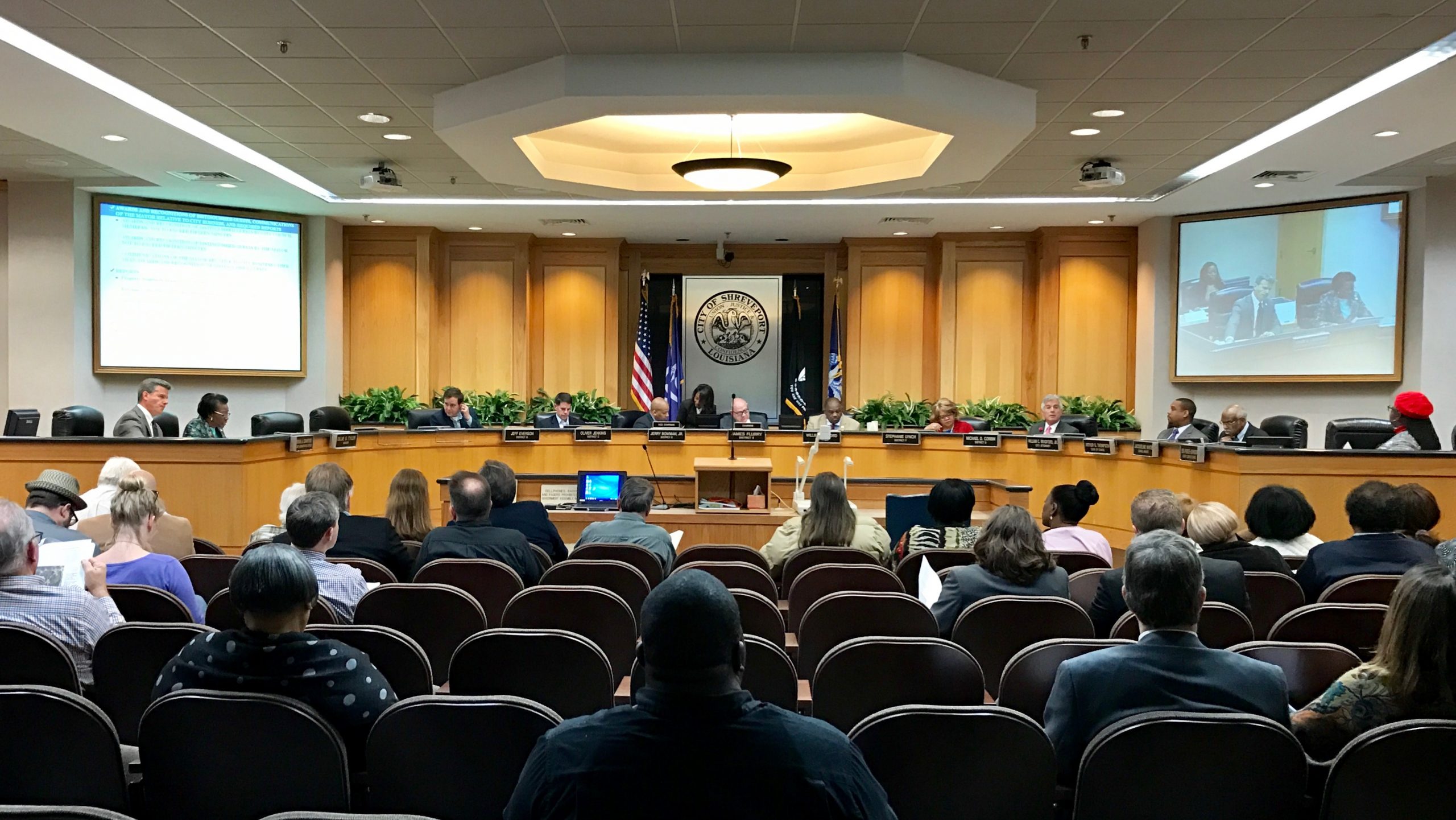An Introduction
In preparation for the coming 2018 municipal elections, we are diving into our City’s government to study some of its most important positions.
In our previous installment, we focused on the executive branch – specifically the Mayor’s office and the role the mayor plays in running Shreveport. We learned Shreveport operates a mayor-Council type municipal organization in that the mayor is the chief executive and is responsible for administering all city departments, writing the budget, signing legislation passed by the Council, appointing members to boards and commissions, as well as acting as the city’s public representative.
In this installment, our focus now turns to the legislative branch or City Council, its composition, process, and role. We will discuss how the city Councilmembers are elected, how they function, the role they play, and who they represent.
Settle in, this is a long article, but we encourage you to make time to read the whole thing. As a reminder, some words have been hyperlinked which, when clicked, will take you to other websites with more details about the topic linked.

Council 101: The Basics
The City Council functions as a parliamentary-style legislative body. The Council (which is made up of seven elected officials from each of Shreveport’s seven Council districts) proposes legislation, holds votes, passes ordinances and resolutions to help govern the city, and acts as representatives for the voice of their districts. If Shreveport were a publicly traded corporation, the mayor would be very much like a CEO and the City Council would be similar to its board of directors.
The Council’s primary role is to propose and pass the laws of the city, including municipal criminal, business, public space, and utilities ordinances and resolutions. The Council also acts as a check to the mayor’s authority in that it must approve the mayor’s appointment of most officers. Lastly, the Council operates a medium for Shreveport citizens to petition for their interests through a public debate and hearing process.
The current Shreveport City Council was established by the City Charter of 1978. The official must live in the district to which they are elected – more on the districts later. Each Council person is elected from one of seven districts across the City to a four-year term with the election taking place on the same day as the corresponding congressional race. No Councilperson may serve more than two terms consecutively. [City Charter Section 4.02 – The Council].
The Council is required by statute to hold regular meetings in the government chamber at Government Plaza on the second and fourth Tuesday of each month at 3:00 p.m. (for some reason, during the time everyone is at work or picking up kids from school). The agenda for each meeting is made available to the public prior to the meeting and all regular meetings are open to the public for observation or to be heard. [Code Appendix A 1.1]
Proposing and Voting on Ordinances and Resolutions
One of the main roles of the Council is to propose, vote, and pass all city ordinances and resolutions. Oftentimes, legislation is first proposed in one of the City Council’s committees, which include committees for infrastructure, public safety, and others. Committee members hammer out the pros and cons of a piece of legislation to reduce the back and forth necessary during council meetings. The city attorney will draft legislation based on committee meetings or an individual Councilmember’s request and add it to the Council meeting agenda for consideration. Ordinances are the governing rules of the municipality’s jurisdiction. Resolutions, however, are the formal expressions of the opinions of the city. They are not binding but rather provide a guiding light for the direction the city will take or provides a mechanism to highlight stances on important topics. While the difference may seem trivial, knowing the how the two differ makes understanding the Council’s actions a bit easier.
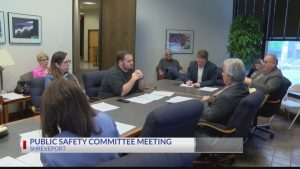
The public debate process is an extremely import feature of American democracies and Shreveport is no exception. Before a proposed ordinance or resolution can become codified, it must pass a series of debates and hearings after which it can be voted on by the Council. Typically, no action can be taken on an ordinance or resolution in the meeting in which it is introduced. The legislation must first be introduced at a regular meeting and placed on the agenda. The following meeting, it is read by title and, in some instances, action may be taken. However, some legislation requires two readings before action may be taken. For such legislation, the process is an introduction, first reading, second reading, then action. [City Charter Section 4.17]. Other specific rules apply for ordinances that appropriate the city’s funds. [City Charter Section 4.18].
For any action to take place in any meeting, a quorum is required. In Shreveport, a quorum is a simple majority of the elected Council (4 out of 7) [City Charter Section 4.15]. In most instances, a simple majority is required for passage of legislation. However, as we discussed in our previous article, the mayor, as a city’s at-large-representative, has veto power. In the event of a mayoral veto, two-thirds (5 out of 7) of the Council present with quorum is required for adoption. [City Charter Section 4.21].
Recently, the Council took up debate on the Uber/Lyft issue. Ultimately, the Council voted to pass an ordinance allowing the ride-sharing companies to enter the Shreveport market, much to the chagrin of the local taxi industry. However, regardless of the politics, the legislative process was on display as the Council persons heard the debate on either side from their constituencies and voted accordingly.
A comprehensive list of all Shreveport city ordinances can be found here.
Reviewing the Budget
Another important role the Council plays is its budget review capacity. As we discussed in our last article, the mayor writes the budget with input from the Council to address the needs of the city. Ultimately, however, the Council must approve the budget ordinance with a vote after a public hearing.

Most recently, the Council voted on the 2018 Shreveport City Operating Budget. The 2018 budget was introduced in October by the mayor. Hearings and review of the budget took place throughout the following months with the final vote on the budget by the Council having occurred in December. The budget was largely adopted from the mayor’s original proposal. However, the Council did add several amendments to the final document. Specifically, the Council amended and voted to reduce the number of funds contributed by the city to the Metropolitan Planning Commission. In addition, they voted to appropriate funds to absorb the cost of an increase in the employee benefit plan. Beyond these and other amendments, the 2018 budget included a 5% pay increase for city employees making less than $75,000 as well as other pay adjustments to the police and fire departments.
As an update to the previous article here is a link to the Mayor’s proposed 2018 budget. The budget approval process was exhaustive and can be seen in the December 11, 2017 agenda and minutes found here. The actual budget ordinance can be found here.

Public Council Meeting Procedures
Regular Council meetings are required by ordinance to take place on the second and fourth Tuesday of each month unless the meeting falls on a holiday or is otherwise postponed out of necessity. The meeting is held on the first floor of Government Plaza downtown at 505 Travis Street. Of course, the meeting is open to the public for anyone to attend. However, the meetings are administered using rules of order that may be unusual if you are not familiar with parliamentary procedure. For those interested, the detailed legal rules of procedure are available here.
All regular meetings are essentially structured in the same way. Most of the time, the only differences between meetings are the issues being addressed. Before each City Council Meeting, an agenda is made available to the public on the city website. The agenda outlines the items to be discussed and/or voted on and the order in which they will be addressed.
Each meeting starts with a call to order followed by an invocation. Then a roll call is taken where the seven Council persons are found to be present or absent. It is at this point that it is determined if there is a quorum (4 out of 7) present. It should be noted that typically the mayor or a representative of the mayor is present at all regular meetings, though it is not required and they are not a part of the roll call. If there is a quorum, a motion (formal proposal) is voiced to approve the previous meeting’s minutes. For a motion to be approved, a second Council person must also agree to the motion typically by verbally responding “I second the motion” or the shorter and more common “second” at which point the motion and second are entered into the record and a vote to approve the motion takes place. All present Councilpersons will vote to either approve the minutes as presented or, if there is an error, to amend the minutes for the record. The motion and second process is used throughout the meeting for any action the Council needs to take.
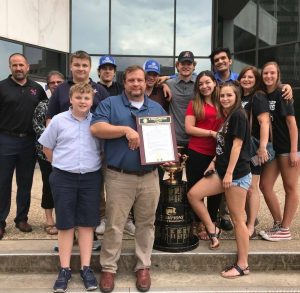
After the minutes are approved or amended, the Council recognizes any awards or distinguished guests who may be present. During this portion of the meeting, the mayor is recognized for any business they may have with the Council. In addition, the Council hears required reports regarding the regular business of the City. These reports can include (but are not limited to) revenue collection, city departments and public/private partnerships, master plan committee, to budget and finance reports. These reports, should there be an update to share, are heard each meeting and are representative of the Council’s role as a check to the mayor’s administrative powers. Additionally, the mayor may be invited to give an update on any administrative proceedings as they relate to the council.
Next, the Council considers any additions to the current meeting’s agenda that, for whatever reason, were not previously added. Typically, resolutions and ordinances are added during the work session (the Monday before the official meeting). Each item that is requested to be added to the agenda must be voted on and approved for addition by the Council. If items are added, they will be acted upon as if they are normal agenda items for the remainder of the meeting.
Once additions are made to the agenda, if any, public comments are heard on topics relating to resolutions or ordinances that are on the agenda. Speakers are allowed three minutes each, though council has often extended time if it is available to give or if one speaker is delivering comments on behalf of a group of people. Public comments not relating to items on the agenda are taken at the end of the meeting. Sometimes, Council may opt delay public comments on a certain topic so that those comments are heard directly before the Council takes a vote on an issue. This typically happens for more controversial issues or ones where there are many people present to speak (who have taken off work to be there).
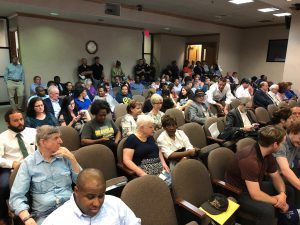
The next series of items on the agenda are “Consent Legislation” items. This kind of item was used more rarely in previous administrations, however recently have become more commonly used for the sake of efficiency. Essentially, resolutions and ordinances that are placed in this section of the agenda are voted on for passage as a group instead of individually. These items are typically very routine legislation and are designated “consent legislation” in the works sessions after being agreed upon by the Councilpersons in advance of the regular meeting.
The next item on the agenda is the “Regular Legislation”. These items are the ordinances and resolutions that are taking the “traditional” route of adoption. The first section of this portion is for resolutions ready for passage – meaning they have been introduced in a prior meeting and only require one reading or have already been read a first time and only require the second reading for passage. In this section, the resolutions are read by title and the Council votes on each resolution individually.
After all of the resolutions that can be voted on have been voted on, the Council then introduces new resolutions and ordinances for future action.
Once the regular legislation has been worked through, the Council “moves” to address any tabled legislation that may be on the agenda. “Tabled Legislation” is any ordinance or resolution that was ready for adoption at a previous meeting, but the Council chose to delay a decision on it. In the event that the Council is ready to take action on tabled legislation, it is placed in this section for action.
Next, the Council hears appeals from the various boards, property standards, alcoholic beverages, and city planning, land use, and annexations, among others. This process allows citizens who have had adverse action taken against them by one of the administrative boards to appeal that decision directly to the Council for approval.
After appeals, the Council then hears reports from their own officers, boards, and committees regarding a variety of issues the Council has a specific interest in at the time. The Clerk of Council will notify Council of any outstanding or upcoming matters to address. This portion of the meeting is the public face of the Council’s own administrative process and allows for accountability. The Council also hears a report from their own clerk which typically deals with correspondence between the Council and the mayor’s office. This can include the mayor’s appointments that are ready for Council approval.
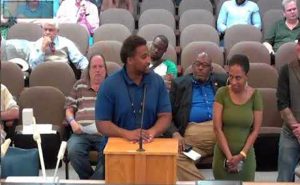
Lastly, the Council reserves time for comments by the mayor, council, and citizens where anyone may address the Council on any issue they so choose, regardless of if it is on the agenda. As with agenda comments, the time to speak is limited to three minutes per individual. though full comments, notes, petition signature lists, etc can be submitted to the council clerk at the end of a citizen’s comments. The clerk will distribute them to the Council for further reading.
After all of the comments are heard, the meeting is adjourned until the next meeting two weeks later. The Council’s agenda are all indexed and archived here.
The Districts and Voters
Councilpersons are elected from seven districts representing a cross-section of the city’s population. Basically, though not at all simply, the Council districts are determined by dividing Shreveport’s population by seven after each official census. A map is then drawn that groups the divided population into districts A, B, C, D, E, F, and G. The goal of the districting is to arrange Shreveport’s population into “logical geographic patterns” so as to elect a Council person from each district [City Charter Section 4.05. – Reapportionment of Council districts].
With roughly 195,000 citizens, the math works out to just under 28,000 citizens per district. However, each one has roughly 18,000-20,000 eligible voters. Why the difference, you ask? Well, kids can’t vote. Also, not everyone is registered. If you’re not registered to vote, you can do that online now at www.sos.la.gov. It only takes about three minutes.
Shreveport City Councilpersons are the People’s advocates. They, more than any other elected official, are the voice of YOU the citizens of Shreveport. The Council controls the rules that affect every Shreveport citizen’s daily life. If you don’t like the speed limit in your neighborhood, call your Councilperson. If you have a pothole on your daily commute, call your Councilperson. If one of the administrative boards or commissions denied your application, call your Councilperson.
If you are unsure which district you live in, visit this link.
Remember, all City Council seats will be up for election this November. The best way to see the change you want is to create it by voting for the candidate who will do the best job for you and our community.
